Safety with Chemicals in the home
There are literally hundreds of hazardous products and materials used daily in and around the house. Medical supplies and products account for over 50% of poisonings, and chemicals are around 30%. We use some pretty heavy duty chemical around our home every day, some of which create substantial health risk that might never be used in the work place due to their hazardous nature. But we often store and use these chemical and flammable liquids with very little consideration for human safety, particularly children and pets. There are so many products used around the home we simply don’t recognise as chemicals such as: soaps, hair products, medical supplies, cough medicine and prescribed drugs, perfumes, multi vitamins, herbal concoctions and cleaning products. It's very important to your whole family that these products are stored safely.
IS YOUR HOME SHED SAFE FROM FIRE & OTHER HAZARDS?
If you consider where the risks are around your home you might be surprised that the humble garden shed is at the top of the list. There are thousands of injuries, accident and incidents occurring within the humble garden shed annually in Australia.
Did you know there are certain rules around the construction of garden sheds that are in place to make the shed safe. For example, a shed must not be any closer to the boundary then 900mm, the same as your house. In fact, the best location for a garden shed is well away from your house and that of your neighbours.
Garden sheds are generally a lethal cocktail of risk and hazards all in the same area and often with little thought to the consequence of something leaking or failing. These include chemicals, solvents such as turps, kerosene, methylated spirits, paint thinners, swimming pool chemicals, pesticides, herbicides, fertilizers, LPG cylinders, petrol and other fuels.
We often don’t apply the same WHS rules around the home that we would at work and as a result serious incidents and accident occurs. Estimates put the number of children under 5 that are admitted to hospital for household poisoning at 4000 per year, with as many 5 to 10 of these children dying as a result. Chemicals and hazardous materials are often stored in the wrong place and within reach of children or animals.
STORAGE & SAFE USE OF CHEMICALS
- Conduct a thorough review of the product being purchased, its use, storage and treatment in the event of exposure, inhalation or ingestion.
- Select the least dangerous product you can to do the job.
- Place our Home Chemical and Hazard Safety Checklist in a prominent position.
- Have you contacted your local council to discard old or leftover chemicals? Remember most councils will not accept liquid paints and these must be solidified before disposal.
- Follow first-aid instructions. If skin or eyes are burnt, if chemical has been swallowed or fumes inhaled, call your doctor, local hospital or an ambulance.
- Remember the Poisons Information Line: 131126
POOL CHEMICAL SAFETY TIPS
Chemicals are used to control algae and certain bacteria and are a great tool to keep pools clean and safe for family and friends. Most pool chemical come in concentrated form and are potentially very hazardous to human health and environment. Care must be taken in their storage and use.
Swimming pool chemicals when mixed with other chemicals can become unstable and produce poisonous fumes and in some cases cause fire, which can be toxic and impact large areas of a neighbourhood. When used and stored correctly pool chemicals, such as chlorine, in granulated or liquid form, pool acids and other stabilising agents and pool detergents are stable.
Download Checklist (pdf)
UNWANTED CHEMICALS
Many of us buy chemicals, herbicides, pesticides, paint and any manner of products when we need them, but in many
cases we don’t need or don't use all of the quantity purchased.
This cocktail of products generally builds up in your shed. What to do with the products and how do you dispose of them in a safe and environmentally sustainable manner?
For example, some smoke alarms such as ionisation devices contain small amounts of radioactive material, however it is safe to dispose up to 10 in your household rubbish.
Download full Checklist for chemical disposal (pdf)
For any further information about chemical safety in the home contact Survival Solutions on
1300 040 362


